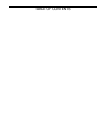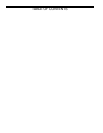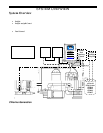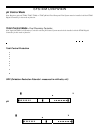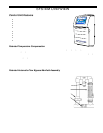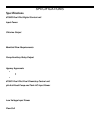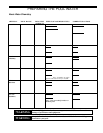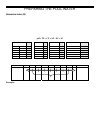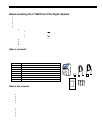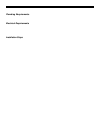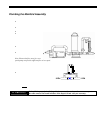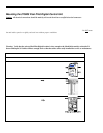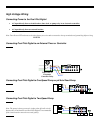
PREPARING THE POOL WATER
7
Basic Water Chemistry
Your Pool Pilot Digital is designed to produce chlorine on a daily basis. To monitor your system’s efficiency, the water
chemistry ranges and schedule of periodic checks outlined below should be followed.
CHEMICAL IDEAL RANGE IDEAL TEST
SCHEDULE
EFFECT OF LOW/HIGH LEVELS CORRECTIVE ACTIONS
Free Chlorine
1.0 To 3.0 ppm Weekly Low free chlorine:
Not enough residual
chlorine to safely sanitize pool water.
High free chlorine: Corrosive to metallic
fixtures in pool water. Can bleach
swimwear and hair.
Low free chlorine: Check for
combined chlorine level and shock as
necessary. Increase purifier output to
maintain a 1-3 ppm residual reading.
High free chlorine: Decrease purifier
output. Let chlorine dissipate
normally until 1-3 ppm is achieved.
In extreme cases, pool water can be
diluted with fresh water or a chlorine
neutralizer added. (Diluting will
reduce salt and CYA. Check and
adjust as needed.)
pH
7.2 To 7.8 Weekly Low pH: (acidic) Equipment corrosion,
eye/skin irritation, plaster etching, rapid
chlorine consumption
High pH:
(basic) Scale formation,
cloudy water, eye/skin irritation, poor
chlorine effectiveness
Low pH
: Add sodium carbonate or
soda ash
High pH:
Add muriatic acid or
sodium bisulfate.
Total
Alkalinity
80 To 120 ppm Monthly Low TA: Eye irritation, pH “bounce”,
stained/etched plaster and metal
corrosion.
High TA:
Constant acid demand,
difficulty in maintaining pH, and
contributes to scale formation or cloudy
water conditions.
Low TA:
Add sodium bicarbonate.
High TA:
Add muriatic acid often, a
little at a time (may take a week or
more to lower the TA). Aerate by
pointing return jets toward the
surface.
Salt
2500 To 3500 ppm Monthly Low Salt: Below 2,400 ppm causes
premature cell failure and reduces
chlorine production
High Salt:
Above 6,000 ppm can cause
corrosion of metallic fixtures and will
taste salty. Note: AutoPilot can safely
operate with salt levels up to 35,000.
Low Salt:
Add salt according to
digital display on Pool Pilot unit or
salt chart.
High Salt:
If undesirably high,
partially drain and refill the pool with
fresh water. (Diluting will reduce
CYA. Check and adjust as needed.)
Calcium
Hardness
200 To 400 ppm Monthly Low CH: Etching of plaster, equipment
corrosion
High CH:
Scale formation, cloudy
water. Rapid buildup of scale may
exceed the system’s self-cleaning
capability and require manual cleaning
of the SuperCell.
Low CH:
Add calcium chloride
flakes.
High CH:
Partially drain and refill
pool with fresh water to dilute.
(Diluting will reduce salt and CYA.
Check and adjust as needed.)
Cyanuric Acid
(CYA or
Stabilizer)
60
30
To
To
80
50
ppm
ppm
Monthly Low CYA:
destruction of chlorine by
the UV rays from the sun.
High CYA: Requires more chlorine to
maintain proper sanitizer levels.
Note: CYA not needed for indoor or
bromine pools.
CYA can be reduced to 30 – 50 ppm for
Pool Pilot Digital TC/ORP or colder
climate regions.
Low CYA:
Add cyanuric acid
(1 lb/5000 gallons increases CYA 25
ppm)
High CYA:
Partially drain and refill
pool with fresh water to dilute.
(Diluting will reduce salt. Check and
adjust as needed.)
! WARNING
Excessively high chlorine levels can cause premature cell failure and corrosion
damage to pool fixtures and equipment.
! WARNING
Always follow the instructions on the manufacturer’s label whenever adding
chemicals to your pool.



